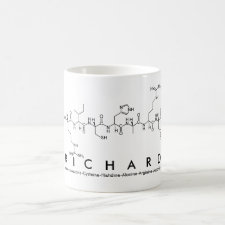
Authors: Ansell RJ
Publication date: 2015
Chapter title: Characterization of the Binding Properties of Molecularly Imprinted Polymers.
Chapter number: 3
Page numbers: 51-93.
DOI: 10.1007/10_2015_316 Alternative URL: http://www.springer.com/978-3-319-20728-5
Book title: Molecularly Imprinted Polymers in Biotechnology
Editors: Mattiasson B, Ye L
Publisher: Springer
City: Berlin,Heidelberg
ISBN: 978-3-319-20728-5
Series title: Advances in Biochemical Engineering/Biotechnology
Abstract: The defining characteristic of the binding sites of any particular molecularly imprinted material is heterogeneity: that is, they are not all identical. Nonetheless, it is useful to study their fundamental binding properties, and to obtain average properties. In particular, it has been instructive to compare the binding properties of imprinted and non-imprinted materials. This chapter begins by considering the origins of this site heterogeneity. Next, the properties of interest of imprinted binding sites are described in brief: affinity, selectivity, and kinetics. The binding/adsorption isotherm, the graph of concentration of analyte bound to a MIP versus concentration of free analyte at equilibrium, over a range of total concentrations, is described in some detail. Following this, the techniques for studying the imprinted sites are described (batch-binding assays, radioligand binding assays, zonal chromatography, frontal chromatography, calorimetry, and others). Thereafter, the parameters that influence affinity, selectivity and kinetics are discussed (solvent, modifiers of organic solvents, pH of aqueous solvents, temperature). Finally, mathematical attempts to fit the adsorption isotherms for imprinted materials, so as to obtain information about the range of binding affinities characterizing the imprinted sites, are summarized
Template and target information: Review - MIP binding properties
Author keywords: Batch binding, Binding isotherms, binding site heterogeneity, Chromatographic analysis, selectivity



Join the Society for Molecular Imprinting

New items RSS feed
Sign-up for e-mail updates:
Choose between receiving an occasional newsletter or more frequent e-mail alerts.
Click here to go to the sign-up page.
Is your name elemental or peptidic? Enter your name and find out by clicking either of the buttons below!
Other products you may like:
 MIPdatabase
MIPdatabase









